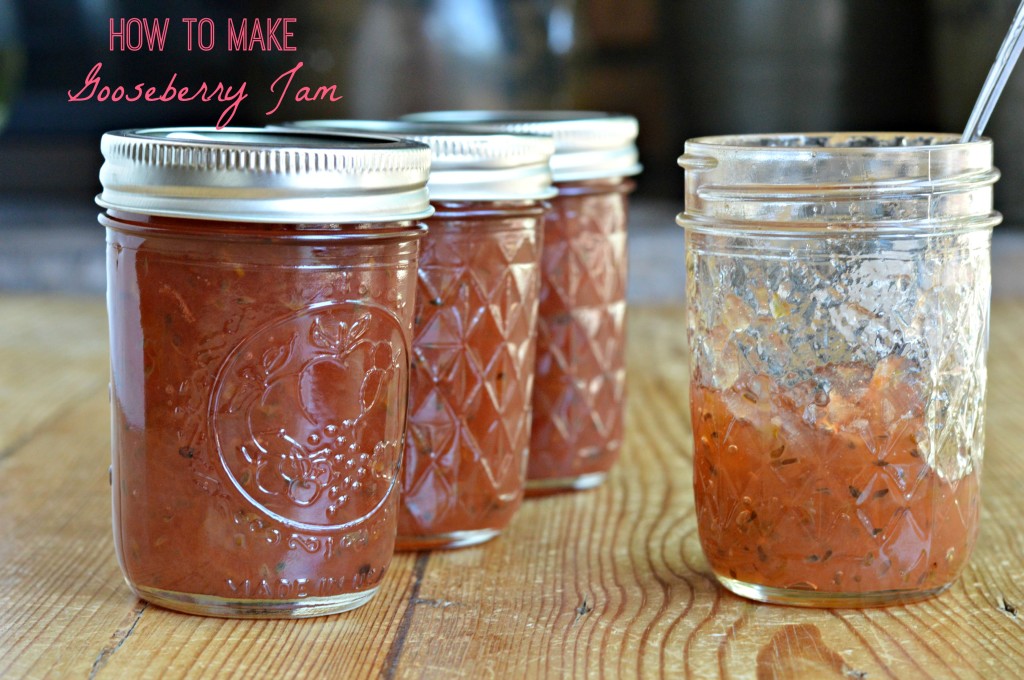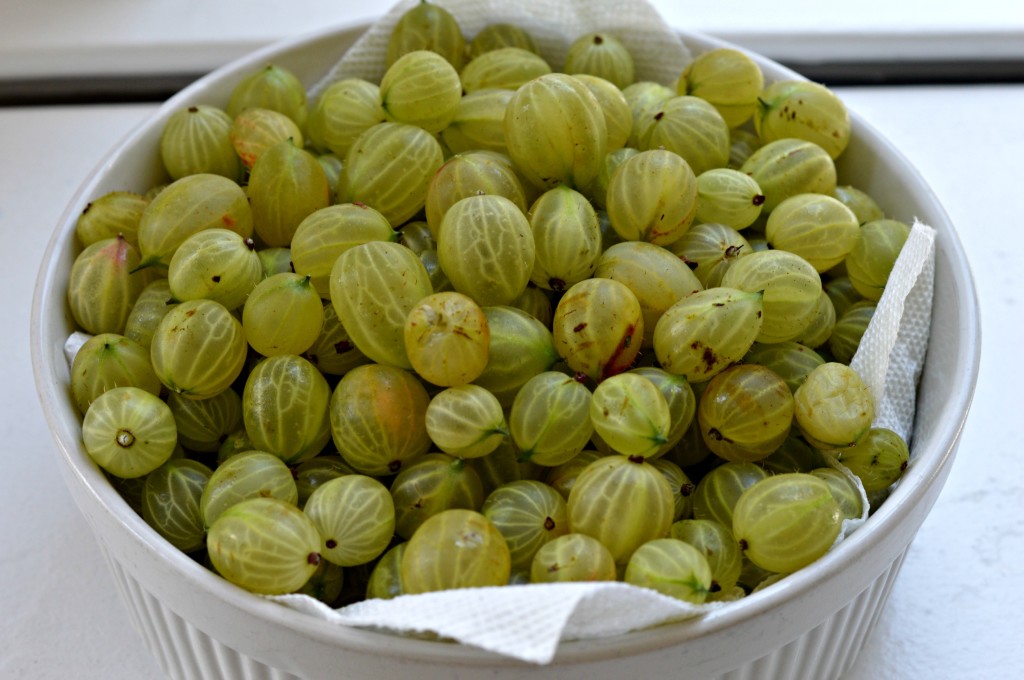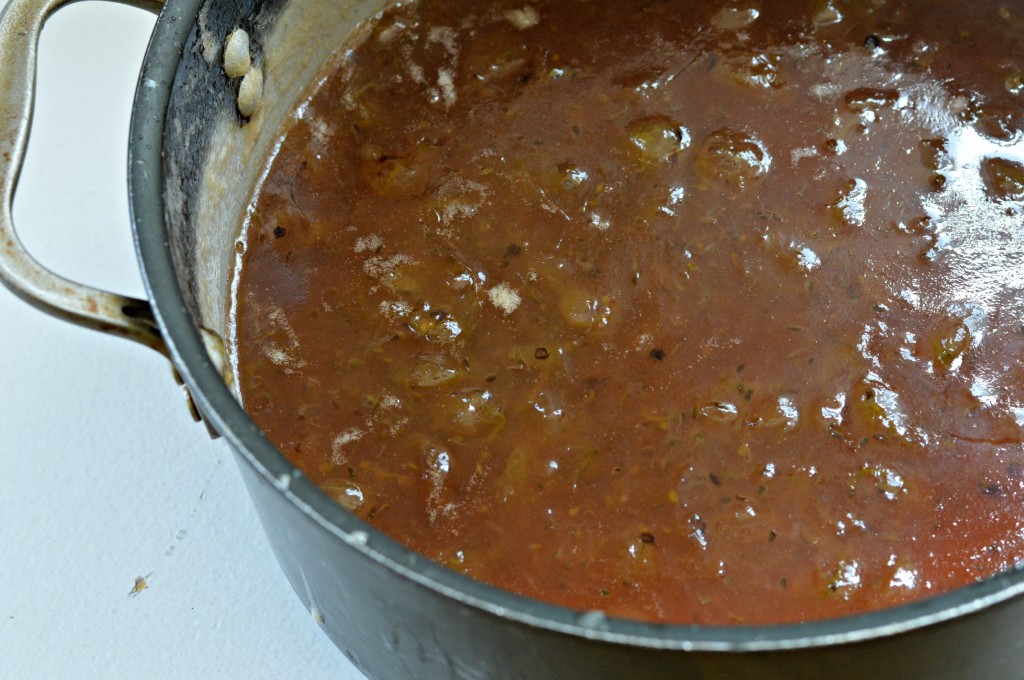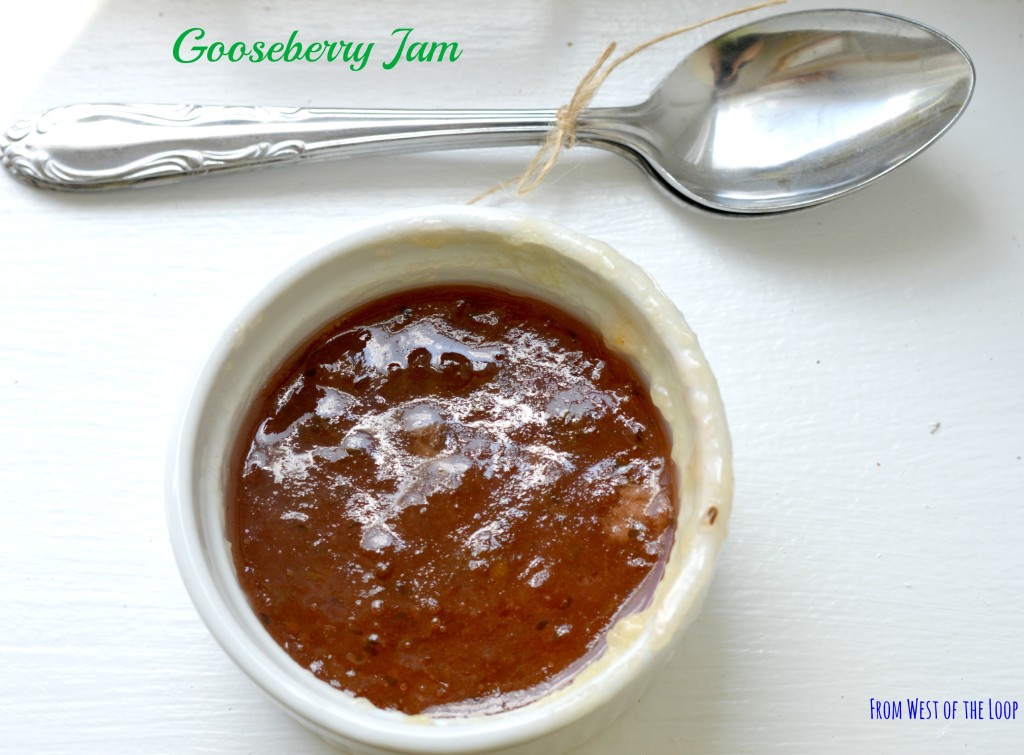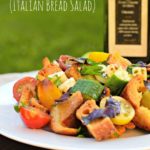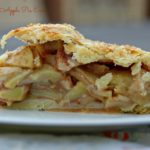I freely admit that I am a sucker for the most unusual item at the market or on a menu. Sometimes my instinct to try that new-to-me food can backfire, such as the bitter and grassy corn shoots in my salad at the Zingerman’s Roadhouse. (Some things are just not for eating, folks.) But nevertheless, I press on. So it was that I passed by all the blueberries and strawberries at the Ann Arbor Farmers Market last Saturday and made a beeline for the vendor selling not one but two different kinds of gooseberries.
One reason that I love to experiment with unusual fruits and vegetables, particularly heirloom or old-fashioned varieties, is because it makes me think of how our ancestors would rarely turn their noses up at something edible. Peasants and pioneers found ways to make use of all the fruits that grew in the forests and fields. Even tart or astringent fruits like rhubarb, currants and sour cherries could be make into jam or baked in a pie. Imagine braving brambles and spines to pick berries for hours because that fruit could not only be eaten at that moment, but also very necessarily preserved for the winter as an important source of vitamin C.
Gooseberries certainly fall into the category of a food you had to be motivated to eat. Odd-looking and unpleasantly tart raw — at least in my view — gooseberries’ pucker is best tamed by the generous application of sweetener. The fruit had long been prized in the United Kingdom — where it is traditionally combined with elderflowers — because in the days before fruits were imported from elsewhere, gooseberries were one of there first fruits to ripen in spring. Nowadays, chefs and home cooks just enjoy gooseberries for their complexity and their traditional appeal.
In her book, The Joy of Jams, Jellies and Other Sweet Preserves, Linda Ziedrich explains that gooseberries belong to the same genus as currants and that these plants are unfamiliar to most Americans because the federal government in the early 1900’s banned their cultivation under the mistaken belief that they could host a disease which infects pine trees. The ban was only lifted in the 1960’s. As a result, American gardeners and cooks are a bit behind those in the United Kingdom when it comes to cultivating and cooking with these fruits.
But I put to you that it is worth discovering gooseberries. I’ll admit that I was initially attracted to these round, pale green berries because of their novelty, but I really enjoyed working with them. The very straightforward gooseberry jam that I made has a delicious and unusual sweet-tart, slightly mineral flavor and a pretty, pale rose color. The berries are naturally quite high in pectin, making them ideal for jam and jelly.
Because they are not too sweet, gooseberries also work well in savory dishes and in Britain, gooseberry sauce is sometimes served with fatty meat or fish, like mackerel. But the most classic preparation is a Gooseberry Fool, a dessert of fruit puree, whipped cream and custard. If you spy some gooseberries at your farmers market and, like me, cannot resist bringing them home despite no clear idea what to do with them, I suggest looking online for British articles and recipes – our friends across the pond really appreciate these gems. Or, do like me and just make jam.
- 2 quarts gooseberries, stems and dried blossom ends removed (otherwise known as topped and tailed)
- ¾ cup water
- 4 cups sugar
- 1 tsp. butter (optional)
- Fill a water-bath canning pot with water and bring to a boil.
- Heat six, eight-ounce jars and warm the lids in a saucepan of simmering water.
- Combine the gooseberries and water in a large, deep saucepan.
- Bring the mixture to a boil over high heat, crushing the berries slightly with a potato masher if they do not break down naturally.
- Once the berries are boiling, add the sugar all at once and stir to dissolve.
- If desired, add the butter to the pot to reduce foaming.
- Return the jam to a boil and then turn the heat down to medium and boil until the jam is thickened, 30-45 minutes. (I used the wrinkle test to determine when my jam was done. That is, I placed several saucers in the freezer and when I thought the jam was close to set, I added a dollop of jam to the plate and put in back in the freezer for one minute. If the jam wrinkled when I pushed it with my finger, it was done.)
- Ladle the jam into the warm jars, leaving ¼ inch headspace, remove any air bubbles and wipe the rims.
- Add warm lids and rings and tighten until you feel resistance.
- Process the jars in a boiling water bath for ten minutes. Allow to cool in the pot with the heat off for five minutes and then remove to a clean towel placed on the counter.
- Check the seals and refrigerate any unsealed jars.
